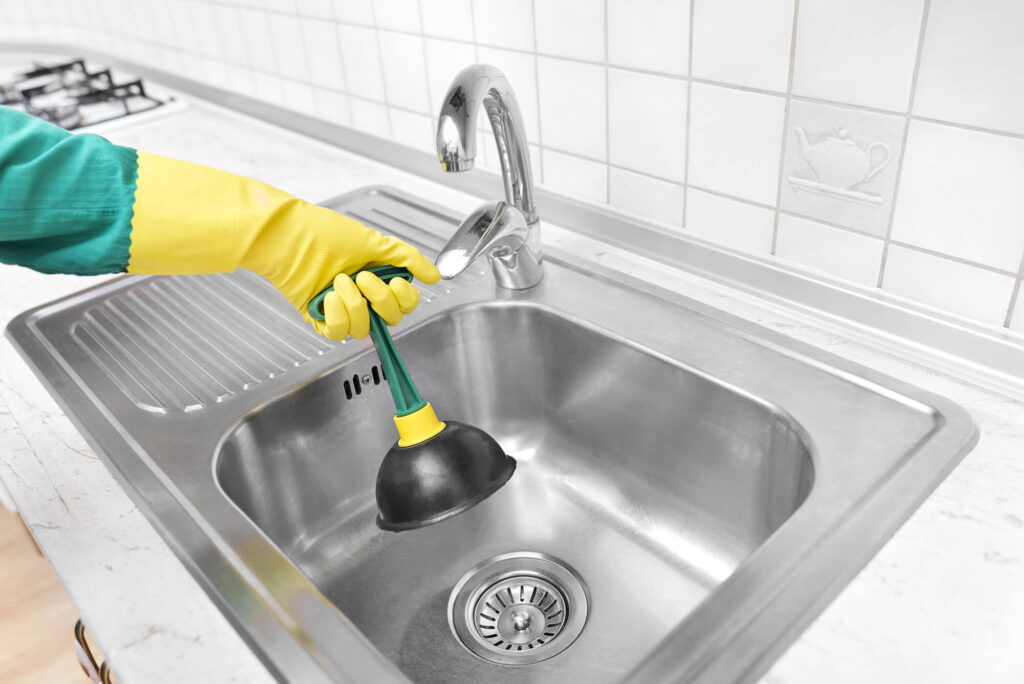
A clogged sink drain can be a frustrating problem. It can be difficult to get the water to drain properly, and it can even start to smell bad. If you’re dealing with a clogged sink drain, don’t worry – there are a few things you can do to fix it.
In this article, we will discuss some of the best ways to clean a sink drain. We will also provide some tips on how to prevent your sink drain from clogging in the first place.
What Causes a Sink Drain to Clog?

There are a number of things that can cause a sink drain to clog. Some of the most common causes include:
- Hair – Hair is one of the most common causes of sink clogs. It can get wrapped around the drain trap or pipe, preventing water from flowing freely.
- Food particles – Food particles can also build up in the drain and cause a clog. This is especially true if you frequently wash dishes without a strainer.
- Grease – Grease can also build up in the drain and cause a clog. It can solidify and harden, making it difficult to remove.
- Soap scum – Soap scum can also build up in the drain and cause a clog. It can form a layer on the inside of the pipe, reducing the flow of water.
- Toilet paper – Toilet paper should never be flushed down the sink. It can cause a clog in the drain, as it does not break down as toilet paper does in the toilet.
How to Clean a Sink Drain
There are a few different ways to clean a sink drain. The best method for you will depend on the severity of the clog.
Method 1: Boiling water
Boiling water is a simple and effective way to clean a sink drain. It can dissolve grease and food particles, and it can also loosen hair that is wrapped around the drain trap.
To clean a sink drain with boiling water, follow these steps:
- Fill a pot with water and bring it to a boil.
- Carefully pour the boiling water down the drain.
- Let the water sit for 10-15 minutes.
- Flush the drain with cold water.
Method 2: Baking soda and vinegar
Baking soda and vinegar is another effective way to clean a sink drain. The combination of baking soda and vinegar creates a chemical reaction that can dissolve grease, food particles, and hair.
To clean a sink drain with baking soda and vinegar, follow these steps:
- Pour 1/2 cup of baking soda down the drain.
- Pour 1 cup of vinegar down the drain.
- Cover the drain with a stopper or cloth.
- Let the mixture sit for 30 minutes.
- Flush the drain with cold water.
Method 3: Drain cleaner
If the above methods do not work, you may need to use a commercial drain cleaner. Drain cleaners are available at most hardware stores.
When using a drain cleaner, it is important to follow the directions on the label carefully. Drain cleaners can be dangerous if they are not used properly. To gain a better understanding of your bathtub drain system, you can refer to a bathtub drain diagram, which illustrates the components and layout of the drainage system.
Preventing a Sink Drain from Clogging
The best way to prevent a sink drain from clogging is to take steps to prevent the build-up of hair, food particles, grease, and soap scum.
Here are a few tips for preventing a sink drain from clogging:
- Use a strainer when washing dishes. This will catch food particles before they can go down the drain.
- Wipe down the sink after each use. This will help to prevent grease and soap scum from building up.
- Pour grease down the garbage disposal, not the drain.
- Flush toilet paper down the toilet, not the sink.
- Use a drain cleaner on a regular basis to keep the drain clean.
By following these tips, you can help to keep your sink drain clog-free.
Conclusion
A clogged sink drain can be a frustrating problem, but it is one that can be easily fixed. By following the tips in this article, you can clean a sink drain and prevent it from clogging in the future.
You may like to read Is Being a Fanatical Sports Fan Socially Acceptable?
